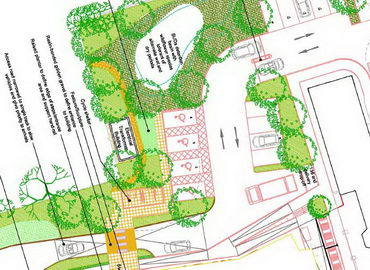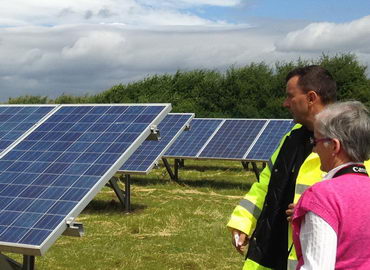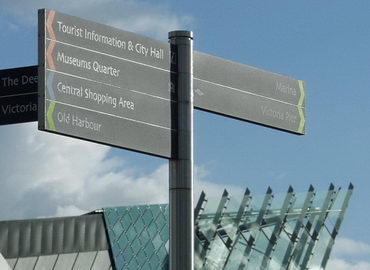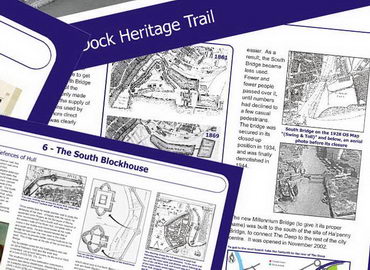What is Environmental Colour Assessment?
Environmental Colour Assessment (ECA) is a study undertaken to establish the naturally occurring colours within a landscape, or alternatively thematic colours within a townscape. This can be used to identify colours which would have a recessive, or camouflaging, effect on new structures within the landscape, enabling them to integrate with, rather than stand out from, their setting. It can also be used to find colours which blend with and compliment local landscape or townscape colours.
ECA is carried out through an established process of using Natural Colour System (NCS) colour swatches on site and comparing background colours directly against the NCS colours. Key viewpoints may be defined in an LVIA or may additionally be selected to record subjects of particular importance in respect of colour.
Landscape colours change dramatically through the seasons, particularly as crops like Oil Seed Rape come into flower. In order to capture the more constant background tones in the landscape (such as bare earth, bare trees and buildings) it is preferable to carry out ECA in the winter months, when seasonal variations in flowers and foliage do not obscure the dominant tones.
Why not RAL or BS?
Industrial colour finishes are often specified by proprietary systems, such as RAL Classic, or by standards such as BS4800. However these systems are not optimised for evaluation of subtle ranges of natural colour because: a) they have a limited colour palette (213 and 144 colours for RAL Classic and BS4800:2011 respectively); and b) the selection of colours is relatively random and tends to be based upon historical production colours.
Why NCS?
In contrast, the Natural Colour System (NCS) is based on visual perception. It is a Global colour standard which uses a co-ordinate system to describe colour in terms of tonality (white to black content) and chromaticness (intensity of colour) to provide an overall nuance. This is then referenced to a colour wheel of primary colours: Yellow - Red - Blue - Green. There are ten intervals between adjacent primary colours in steps of 10%, where Y10R = Yellow with 10% Red, Y20R = Yellow with 20% Red, and so on. Colours can then be described by their nuance and hue using a precise alpha-numeric system.
NCS can also help to explain why some colours look 'wrong' or 'not natural'. A ubiquitous example is RAL 'Moss Green', which is frequently used for infrastructure (eg fencing, electrical cabinets, bridges). ECA shows that it is essentially a blue-green, whereas natural greens are predominantly yellow-green. 'Moss Green' is very poorly-named!
Why 2B?
Chartered Professionals
All senior members of the team are Chartered Members of the Landscape Institute (CMLI). As recognised by our involvement with LI Technical Commitee, 2B is at the cutting edge of such relatively new and specialist techniques as Environmental Colour Assessment, and has undergone formal training with recognised leaders in the field, followed by successful project experience, as can be seen in the case studies.
You can be assured that an ECA produced by 2B will be carried out by Chartered Landscape Architects, correctly implemented and sensitive to wider issues of landscape character and landscape assessment.
2B Landscape Consultancy has consistently delivered what was required (and more). They have shared their wider knowledge and experience for the benefit of the project and hence added considerable value.







